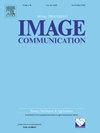ZERRIN-Net:基于视网膜分解和噪声提取的自适应弱光图像增强
IF 2.7
3区 工程技术
Q2 ENGINEERING, ELECTRICAL & ELECTRONIC
引用次数: 0
摘要
弱光图像增强的目的是校正在曝光不足条件下拍摄的图像的曝光,同时去除图像噪点和恢复图像细节。以往的弱光图像增强算法大多在校正分量中采用手工先验去噪;然而,由于校正分量中含有大量的图像细节信息,并且存在一些伪噪声,这些方案最终得到的增强结果并没有去除原始噪声,图像细节出现模糊。针对以上问题,我们提出了基于Retinex分解的零镜头微光增强方法ZERRIN-Net。首先,我们设计了原始噪声提取网络N-Net,该网络可以在不丢失图像细节信息的情况下自适应提取低照度图像的原始噪声。此外,我们提出了分解网络RI-Net,该网络基于Retinex原理,利用简单的自监督机制将低光图像分解为反射分量和光分量。在本文中,我们对大量数据集以及高级视觉任务(如人脸检测、目标识别和实例分割)进行了广泛的实验。实验结果表明,该方法的性能与目前最先进的方法相比具有竞争力。代码可从https://github.com/liwenchao0615/ZERRINNet获得本文章由计算机程序翻译,如有差异,请以英文原文为准。
ZERRIN-Net: Adaptive low-light image enhancement using Retinex decomposition and noise extraction
Low-light image enhancement aims at correcting the exposure of images taken under underexposed conditions while removing image noise and restoring image details. Most of the previous low-light image enhancement algorithms used hand-made a priori denoising in the corrected component; however, due to the large amount of detail information of the image contained in the corrected component and the presence of some pseudo-noise, the final enhancement results obtained by these solutions do not have the original noise removed, and the image details appear blurred. To solve the above problems, we propose ZERRIN-Net, a zero-shot low-light enhancement method based on Retinex decomposition. First of all, we first design the original noise extraction network N-Net, which can adaptively extract the original noise of low-light images without losing the detailed information of the images. In addition, we propose the decomposition network RI-Net, which is based on the Retinex principle and utilizes a simple self-supervised mechanism to help decompose a low-light image into a reflection component and a light component. In this paper, we conduct extensive experiments on numerous datasets as well as advanced vision tasks such as face detection, target recognition, and instance segmentation. The experimental results show that the performance of our method is competitive with current state-of-the-art methods. The code is available at: https://github.com/liwenchao0615/ZERRINNet
求助全文
通过发布文献求助,成功后即可免费获取论文全文。
去求助
来源期刊

Signal Processing-Image Communication
工程技术-工程:电子与电气
CiteScore
8.40
自引率
2.90%
发文量
138
审稿时长
5.2 months
期刊介绍:
Signal Processing: Image Communication is an international journal for the development of the theory and practice of image communication. Its primary objectives are the following:
To present a forum for the advancement of theory and practice of image communication.
To stimulate cross-fertilization between areas similar in nature which have traditionally been separated, for example, various aspects of visual communications and information systems.
To contribute to a rapid information exchange between the industrial and academic environments.
The editorial policy and the technical content of the journal are the responsibility of the Editor-in-Chief, the Area Editors and the Advisory Editors. The Journal is self-supporting from subscription income and contains a minimum amount of advertisements. Advertisements are subject to the prior approval of the Editor-in-Chief. The journal welcomes contributions from every country in the world.
Signal Processing: Image Communication publishes articles relating to aspects of the design, implementation and use of image communication systems. The journal features original research work, tutorial and review articles, and accounts of practical developments.
Subjects of interest include image/video coding, 3D video representations and compression, 3D graphics and animation compression, HDTV and 3DTV systems, video adaptation, video over IP, peer-to-peer video networking, interactive visual communication, multi-user video conferencing, wireless video broadcasting and communication, visual surveillance, 2D and 3D image/video quality measures, pre/post processing, video restoration and super-resolution, multi-camera video analysis, motion analysis, content-based image/video indexing and retrieval, face and gesture processing, video synthesis, 2D and 3D image/video acquisition and display technologies, architectures for image/video processing and communication.
 求助内容:
求助内容: 应助结果提醒方式:
应助结果提醒方式:


